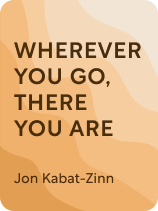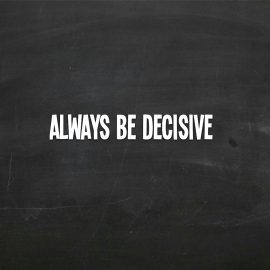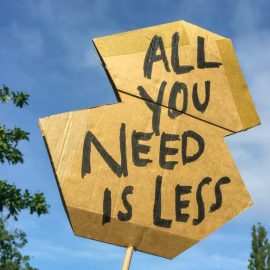

This article is an excerpt from the Shortform book guide to "Wherever You Go, There You Are" by Jon Kabat-Zinn. Shortform has the world's best summaries and analyses of books you should be reading.
Like this article? Sign up for a free trial here.
What is Jon Kabat Zinn’s mindfulness meditation practice? What postures should you use to meditate properly?
Formal meditation requires you to focus on your breathing, posture, and visualizations. If it sounds hard, don’t fret. Wherever You Go, There You Are by Jon Kabat-Zinn has plenty of advice for making your meditation smooth sailing.
Continue reading to learn how to escape the world and focus on mindfulness meditation.
Practicing Mindfulness Through Meditation
According to Jon Kabat-Zinn, mindfulness meditation starts with focusing on your breath. If you’ve never practiced mindfulness before, it can be helpful to set aside short periods in your time to implement a more formal meditation practice. That way you can focus fully on your practice and get comfortable honing your focus before trying to introduce mindfulness more regularly into your daily life.
(Shortform note: Some psychologists don’t recommend formal meditation practice for people struggling with chronic conditions like intense anxiety, ongoing depression, trauma, psychotic episodes, or active addiction, because the intense focus on your inner emotional landscape can feel overwhelming. If you suffer from a chronic condition, start by drawing awareness to the outside world or a simple activity, like chopping vegetables or folding laundry, instead.)
In meditation practice, there’s no one right way to meditate. Kabat-Zinn describes meditation as being like walking along a trail. With each step, you make split-second decisions about where to put your foot next and how you step. Each step you take informs the following step. Rarely do you have to think about where you step next—you just do it. Just like walking along a trail, there’s no one way to practice meditation. Everyone will do it differently, so don’t think about what’s supposed to happen, just practice being aware of what is.
(Shortform note: Metaphors can be helpful tools in explaining the abstract quality of mindfulness. While Kabat-Zinn uses the images of walking along a trail, psychologist Christopher Willard, author of Child’s Mind, compares mindfulness to sitting on a train and looking out the window: Instead of trying to climb out every time you see something interesting, he explains, you take in the landscape as it rolls by. The Headspace App describes mindfulness as sitting on the side of a busy road, watching traffic go by instead of running into the road and trying to stop every car or chase after them.)
Just as there’s no right way to meditate, there’s also no right amount of time to practice. The amount of time isn’t important. As Kabat-Zinn explains, every second is another opportunity to be present. Over time you’ll build up your stamina and be able to meditate for longer and longer periods.
(Shortform note: Sometimes all it takes is one breath. While some research has suggested that it’s most helpful to meditate for at least 15 minutes a day, in Joy on Demand, former Google engineer Chade-Meng Tan advocates for the power of one mindful breath. He explains that even one breath in which you make your exhale longer than your inhale will activate your parasympathetic nervous system, calming your body and your mind.)
Meditation practice can happen at any time of day, although Kabat-Zinn makes a plug for the early morning, which he describes as an especially fruitful time to meditate. Mornings, he explains, are naturally still. More often than not it’s dark and you’re alone. Moreover, waking up early requires the same discipline required to meditate, so early morning meditation gives you the opportunity to more easily observe your mind’s objections and resistance to practicing. Finally, he explains, when you start your day with mindfulness the benefits are more likely to stay with you through the rest of the day.
(Shortform note: Kabat-Zinn isn’t alone in advocating a morning routine. Many highly successful people, including Apple CEO Tim Cook and Michelle Obama, have lauded the benefits of waking up before 6 a.m. Robin Sharma, author of The 5 AM Club, refers to the hour of 5 to 6 a.m. as the “Victory Hour” because it’s the most productive hour of the day. He advocates spending this first hour of the day improving your body, strengthening your mind, and making progress on your goals.)
Postures
What does formal meditation look like? Kabat-Zinn introduces several postures that are conducive to meditation practice:
Sitting meditation is a meditation posture that involves sitting cross-legged in an upright position. Kabat-Zinn explains that your posture should reflect the meditative mind—neither passive nor tense, but relaxed and alert. He suggests sitting in a way that reflects dignity—a tall spine, shoulders back, and your chin slightly raised. You can rest your hands on your knees, either facing up in a gesture of openness or down to reflect inward focus.
(Shortform note: While the goal of a meditative posture is to remain relaxed, it’s common to also experience pain in a seated posture, especially as you begin to sit for longer stretches of time. If you experience pain as you meditate, try directing your attention to the pain rather than away from it. Being aware of and welcoming pain makes it easier to manage and understand. To start, try getting comfortable with the pain and paying attention to your reaction instead of the pain itself. Investigate the pain by locating it, describing its qualities, and observing any movement around it. Approaching your pain with curiosity has the power to transform your experience and teach you about your own body.)
In traditional monastic environments, periods of sitting meditation are often broken up with a walking meditation. Just as with sitting meditation, you should maintain a relaxed, but alert posture, moving slowly and intentionally as you walk. Kabat-Zinn suggests finding solitude for your walking meditation, allowing you to focus on your practice without being concerned about what other people might be thinking about you.
(Shortform note: Walking meditation can also be helpful as you begin to think about how your meditation practice translates into daily mindfulness. In Mindfulness in Plain English, Gunaratana explains that while sitting meditation is all about stillness, walking meditation helps you practice staying mindful while in motion, a key skill when working on living more mindfully.)
Lying down meditation is especially valuable when your body needs to relax. Kabat-Zinn recommends maintaining the same alert, but relaxed posture. In this position, try doing a body scan in which you shift your focus to different parts of your body, paying attention to what you notice and feel there. Kabat-Zinn explains that this meditation can be particularly helpful for getting in touch with strong emotions, which often manifest in different parts of our bodies. For example, you might find anxiety living in your belly, anger in your jaw, or fear in your throat.
(Shortform note: Body scans don’t only have to happen lying down, so don’t hesitate to use them in your daily life if you notice yourself feeling strong emotions. Body scans meditations help ground your body and your thoughts, reduce stress and tension, and increase self-compassion. So next time you’re about to go into a high-pressure meeting or a hard conversation, consider doing a body scan first. You’ll likely go into the experience more focused, calm, and compassionate.)
Visualizations
Kabat-Zinn also offers several visualizations that he uses to support his mindfulness meditation practice.
First, he describes a mountain meditation. In a seated position, picture a mountain. Notice its shape, its size, its stillness. Imagine the mountain in every season—warmed by sun, covered with snow, and standing firm in the midst of a wild thunderstorm. Notice how the mountain is unchanged as the world moves and changes around it. Continue to breathe, holding the image of the mountain in your mind. Try to bring the image of the mountain into your body, so that you become the mountain you’re picturing.
(Shortform note: The mountain meditation, often attributed to Kabat-Zinn, can be particularly helpful when you’re confronting uncertainty and change. This is a grounding meditation that helps you feel centered even in the midst of turbulent changes. You can find a free guided version of the mountain meditation led by Kabat-Zinn on YouTube.)
The lake meditation can be done either seated or lying down. Start by picturing yourself as a vast lake held by the earth. First imagine the lake perfectly still and mirror-like. Now imagine the lake in a heavy rainstorm or churned up by strong winds. Picture your thoughts as the waves and ripples on top of the lake. Now picture the undisturbed silence below the surface. As you continue your meditation, remember that you embody the entire lake, both the disruptions on the surface and the deep stillness below.
(Shortform note: The lake meditation and other similar water meditations are particularly helpful in managing stress or anxiety because they help you to visualize yourself flowing around obstacles and trusting the flow of your own life. Some practitioners suggest that submerging yourself in water, even if it’s just a bath, can enhance the experience of a water meditation. You can find a free guided version of the lake meditation, led by Kabat-Zinn, on YouTube.)
The loving-kindness meditation is about recognizing that you’re a part of a larger whole, and the belief that if you treat yourself with compassion you can make the world a more compassionate place. Start by focusing on your breath, then expand your attention to encompass your entire being. Imagine holding yourself with love and attention, as you might hold a frightened child. Tell yourself that you’re loved and that you’re worthy of happiness. After directing your compassion inward, direct your attention outward, offering thoughts of compassion to your loved ones, neighbors, and then to anyone who might be suffering.
(Shortform note: The loving-kindness meditation can be particularly helpful when you’re in conflict with another person. For example, Chade-Meng Tan, co-chair of the One Billion Acts of Peace Campaign, explains how he uses loving-kindness meditation as a tool to diffuse conflict by managing his own emotional response. You can find a free guided version of a loving kindness meditation, also known as metta meditation, on YouTube.)
| The Pros and Cons of Guided Meditation Many of these visualizations and others can be found in the form of guided meditations on apps like Calm, Headspace, 10% Happier, or Jon Kabat-Zinn’s JKZ Meditations App. Guided meditations have a number of benefits, especially as you’re first getting started in your mindfulness practice. For example, guided meditations are easier to follow and help you focus your attention, offering gentle reminders to draw your attention back to the present moment when your mind wanders. The sounds, music, and voices of a guided meditation can also help you relax during your meditation practice. However, guided meditations don’t always sync up with your own breathing, and it can be easy to listen to guided meditations mindlessly. Make sure you’re using your guided meditations as a tool instead of a crutch, and don’t be afraid to experiment with unguided meditation as a way to deepen your practice. |

———End of Preview———
Like what you just read? Read the rest of the world's best book summary and analysis of Jon Kabat-Zinn's "Wherever You Go, There You Are" at Shortform.
Here's what you'll find in our full Wherever You Go, There You Are summary:
- A guide to mindfulness for both beginners and seasoned practitioners
- How to incorporate mindfulness more intentionally into your daily life
- How to practice mindfulness through meditation






